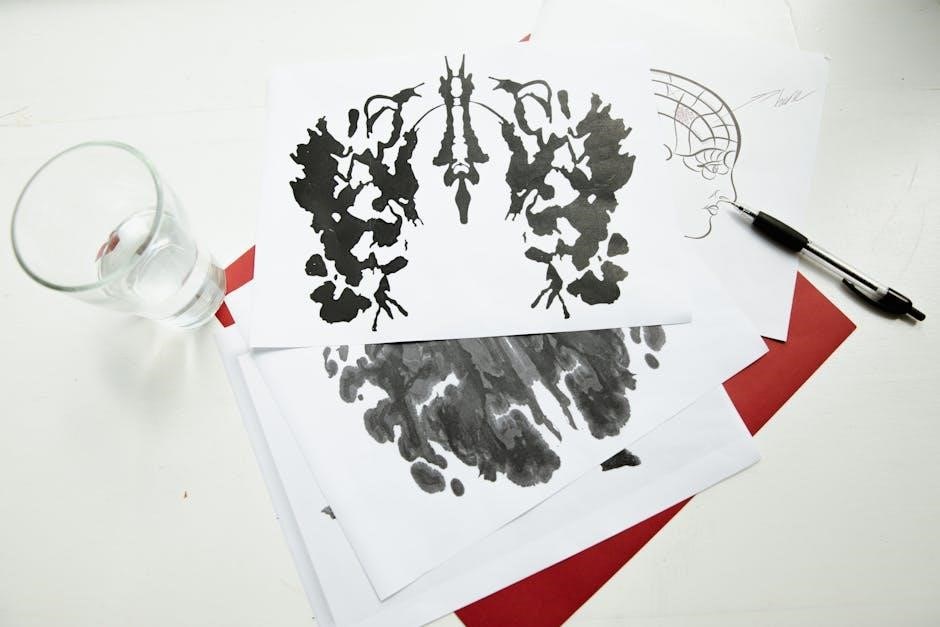Maya Angelou’s “Still I Rise” is a powerful poem celebrating resilience‚ self-worth‚ and defiance against racism. Written in 1978‚ it remains a timeless anthem of empowerment and hope.
Overview of the Poem
“Still I Rise” by Maya Angelou is a powerful and evocative poem that explores themes of resilience‚ identity‚ and defiance in the face of oppression. First published in her 1978 collection And Still I Rise‚ the poem is written in free verse‚ with a loose rhythm that mirrors the natural cadence of speech. Through its vivid imagery and repetitive refrains‚ the poem conveys the speaker’s unwavering determination to rise above the forces of racism‚ misogyny‚ and personal hardship. The poem’s structure is deceptively simple‚ yet its emotional depth and universal message have made it one of Angelou’s most celebrated works. It is both a personal declaration of survival and a broader anthem of empowerment for marginalized communities‚ resonating with readers worldwide for its unyielding spirit and hope.
Historical and Cultural Context
“Still I Rise” emerges from the rich cultural and historical tapestry of the late 20th century‚ a period marked by civil rights activism and the rise of feminist movements. Written in 1978‚ the poem reflects Maya Angelou’s personal experiences as a Black woman in America‚ navigating racism‚ sexism‚ and societal marginalization. The poem’s themes of resilience and defiance resonate deeply with the broader struggles of African Americans during this era‚ drawing on the legacy of the Civil Rights Movement and the collective fight for equality. Angelou’s work also intersects with the Black Arts Movement‚ which celebrated Black identity and challenged systemic oppression. By addressing themes of race‚ gender‚ and personal empowerment‚ “Still I Rise” became a cultural touchstone‚ giving voice to the experiences of marginalized communities and inspiring future generations to embrace their identity and resist oppression with pride and strength.
Significance of the Poem in Literary Studies
“Still I Rise” holds a pivotal place in literary studies for its profound exploration of themes such as resilience‚ identity‚ and defiance. The poem’s ability to transcend time and resonate across cultures has solidified its status as a cornerstone of modern literature. Scholars often analyze its use of repetition‚ imagery‚ and rhythm‚ which contribute to its emotional and rhetorical power. As a work by a Black woman‚ it challenges traditional literary canons‚ offering a unique perspective on race and gender. The poem’s structure and style have influenced countless writers‚ making it a subject of study in feminist and postcolonial criticism. Its exploration of personal and collective empowerment continues to inspire academic discourse‚ ensuring its enduring relevance in literary scholarship and cultural studies.

Themes in “Still I Rise”
The poem explores resilience‚ identity‚ racism‚ and empowerment‚ capturing the struggle against oppression and the triumph of self-worth through powerful imagery and repetition.
Resilience and Perseverance
Resilience is central to “Still I Rise‚” as the speaker defies oppression with unwavering determination. The repetition of “I rise” emphasizes unrelenting perseverance despite adversity‚ reflecting Angelou’s own life struggles. The poem’s vivid imagery‚ such as rising “like dust‚” symbolizes the indomitable human spirit. Through this‚ Angelou conveys that hardships cannot diminish one’s strength. The speaker’s tone is confident and unyielding‚ celebrating the ability to overcome. This theme resonates universally‚ inspiring readers to embrace their own resilience in the face of challenges‚ making the poem a powerful testament to the human capacity for perseverance and hope.
Identity and Self-Worth

Identity and self-worth are pivotal themes in “Still I Rise‚” as the speaker asserts her pride and dignity despite societal oppression. The poem challenges external perceptions‚ celebrating individuality and inner strength. Through lines like “I’m a black ocean‚ leaping and wide‚” Angelou affirms her heritage and self-love. The speaker’s unapologetic embrace of her identity serves as a powerful rebuke to racism and misogyny. This theme resonates deeply‚ especially for marginalized communities‚ encouraging self-acceptance and rejecting imposed inferiority. Angelou’s exploration of self-worth is both personal and universal‚ making the poem a anthem for self-empowerment and a celebration of one’s true identity‚ regardless of external judgment or oppression.

Racism and Oppression
Racism and oppression are central themes in “Still I Rise‚” as the speaker confronts systemic inequalities and societal prejudice. The poem addresses historical and ongoing struggles faced by African Americans‚ with vivid imagery like “You may trod me in the very dirt” highlighting the brutality of oppression. Yet‚ the speaker’s defiance and resilience shine through‚ refusing to be diminished by such injustices. Angelou uses direct language to challenge these forces‚ asserting her unyielding spirit and hope for a better future. The poem not only critiques racism but also serves as a testament to the enduring strength of those subjected to it‚ making it a powerful call to action and a celebration of resistance and survival in the face of oppression.
Defiance and Empowerment
Defiance and empowerment are intertwined in “Still I Rise‚” as the speaker assertively challenges societal oppression and celebrates self-worth. Through bold declarations like “I rise‚ I rise‚ I rise‚” Angelou conveys unwavering confidence‚ rejecting the notion that external forces can diminish her spirit. The poem becomes an anthem of resistance‚ encouraging readers to embrace their identity and stand against injustice. By addressing the oppressor directly‚ the speaker asserts her dignity and resilience‚ transforming personal struggle into collective empowerment. Angelou’s use of repetition and strong imagery underscores the transformative power of self-love and defiance in overcoming systemic oppression‚ making the poem a timeless symbol of liberation and personal triumph. This theme resonates deeply‚ inspiring individuals to rise above adversity and claim their rightful place of strength and equality.

Poetic Structure and Style
The poem’s structure features repetition‚ vivid imagery‚ and a strong rhythm‚ enhancing its emotional impact. Angelou’s use of simple yet powerful language creates a cadence that mirrors the resilience of the human spirit.
Use of Repetition
Repetition is a striking feature in “Still I Rise‚” where phrases like “I rise” and “I’ll rise” emphasize defiance and resilience. This technique creates rhythm‚ reinforcing the speaker’s determination. It also builds momentum‚ highlighting the unstoppable nature of the speaker’s spirit. By repeating these phrases‚ Angelou underscores the theme of overcoming oppression‚ making the poem anthemic. The repetition becomes a form of empowerment‚ resonating deeply with readers. It serves as a reminder of the speaker’s unwavering confidence and their refusal to be silenced or defeated. Through this literary device‚ Angelou crafts a powerful narrative of self-affirmation and triumph.
Imagery and Symbolism
Maya Angelou’s “Still I Rise” is rich in vivid imagery and powerful symbolism‚ enhancing its emotional and cultural depth. The poem uses natural imagery‚ such as “dust” and “sun‚” to symbolize resilience and the inevitability of rising above oppression. The speaker’s body is a symbol of strength and defiance‚ challenging societal norms that sought to demean Black women. Sensual imagery‚ like “hips” and “hairstyle‚” celebrates Black beauty and identity‚ countering historical objectification. These symbols reinforce the theme of self-worth and resistance. The imagery also evokes a sense of hope and triumph‚ inviting readers to envision a future where oppression is overcome. Through these symbols‚ Angelou crafts a narrative of empowerment‚ making the poem a celebration of identity and collective strength.
Rhythm and Cadence
The rhythm and cadence in “Still I Rise” play a crucial role in conveying the poem’s message of defiance and resilience. Angelou employs a steady‚ pulsating rhythm that mimics the cadence of African-American oral traditions‚ creating a sense of musicality. The repetition of phrases like “I rise” and “I’ll rise” becomes a powerful refrain‚ emphasizing the speaker’s unwavering determination. The poem’s meter is deliberate and strong‚ reflecting the confidence and unyielding spirit of the speaker. The rhythm also builds momentum‚ mirroring the ascent of the oppressed from the depths of despair to a place of triumph. This musical quality makes the poem not only a literary masterpiece but also a performance piece‚ allowing readers to feel the emotional weight and empowerment embedded in its words. The cadence underscores the universality of the struggle for dignity and equality.

Analysis of Key Lines
The poem’s key lines‚ such as “You may trod me in the very dirt‚ but still‚ like dust‚ I’ll rise‚” encapsulate resilience and defiance‚ resonating deeply with readers.
“You may trod me in the very dirt‚ but still‚ like dust‚ I’ll rise.”
This iconic line from “Still I Rise” embodies the poem’s central theme of resilience. It vividly portrays the speaker’s defiance against oppression‚ using the imagery of dust rising despite being trodden down. The line symbolizes the indomitable human spirit‚ particularly in the face of systemic racism and marginalization. Angelou’s use of “dust” as a metaphor highlights the speaker’s ability to persevere and rise above adversity‚ refusing to be diminished by societal prejudices. This line has become a powerful anthem for resilience‚ inspiring countless individuals to embrace their strength and dignity. Its repetition throughout the poem reinforces the speaker’s unwavering determination to overcome oppression and emerge triumphant. The line’s emotional depth and universal appeal continue to resonate‚ making it one of the most celebrated lines in modern poetry.
“I rise‚ I rise‚ I rise.”
The repetition of “I rise” in Maya Angelou’s poem is a powerful declaration of resilience and defiance. This refrain underscores the speaker’s unwavering determination to overcome oppression and systemic inequalities. The rhythmic repetition creates a sense of inevitability‚ emphasizing the speaker’s unshakable confidence and strength. By repeating the phrase‚ Angelou amplifies the poem’s emotional impact‚ transforming it into a triumphant anthem of self-empowerment. The line also symbolizes the collective struggle of marginalized communities‚ encouraging them to rise above societal constraints and embrace their dignity. The simplicity and forcefulness of “I rise” make it a memorable and inspiring rallying cry‚ resonating with readers across generations and cultures. This repetition is central to the poem’s enduring legacy as a celebration of resilience and hope in the face of adversity.
Exploring the Speaker’s Tone and Voice
The speaker’s tone in “Still I Rise” is one of unyielding defiance and empowerment‚ reflecting a deep-seated confidence. Angelou’s voice is both personal and universal‚ addressing the reader with directness while embodying the collective experience of marginalized communities. The tone shifts between assertive and reflective‚ creating a dynamic interplay that captures the speaker’s resilience. Through a blend of sarcasm and pride‚ the speaker confronts oppression head-on‚ challenging societal norms and expectations. The use of rhetorical questions and vivid imagery further intensifies the emotional depth‚ making the voice both confrontational and triumphant. This duality allows the poem to resonate on multiple levels‚ making it a powerful expression of self-affirmation and resistance. The speaker’s voice emerges as a symbol of strength‚ inspiring readers to embrace their identity and rise above adversity.

Maya Angelou’s Background

Maya Angelou was a renowned African American poet‚ born in 1928 in St. Louis‚ Missouri. She faced racial discrimination and personal hardships‚ shaping her writing and activism for civil rights.
Biographical Sketch
Maya Angelou‚ born Marguerite Annie Johnson on April 4‚ 1928‚ in St. Louis‚ Missouri‚ was a celebrated poet‚ memoirist‚ and civil rights activist. Her early life was marked by racial discrimination and personal struggles‚ including a period of mutism after being raped at age seven. Despite these challenges‚ Angelou developed a passion for literature and performance‚ which became central to her career. She gained international acclaim with her autobiographical work I Know Why the Caged Bird Sings in 1969. Angelou’s poetry‚ particularly “Still I Rise‚” reflects her resilience and defiance in the face of oppression. Her work has been widely praised for its vivid imagery‚ powerful themes‚ and celebration of African American identity. She passed away on May 28‚ 2014‚ leaving behind a legacy as one of the most influential voices in American literature.
Influence of Personal Experiences on the Poem
Maya Angelou’s personal experiences deeply shaped “Still I Rise‚” reflecting her resilience against racism and sexism. Born into a world of racial segregation‚ she faced discrimination and personal trauma‚ including childhood rape and years of mutism. These struggles informed her poetry‚ as she transformed pain into empowerment. The poem’s defiance and celebration of identity mirror her journey of self-discovery and defiance against societal oppression. Angelou’s experiences as a Black woman in America are central to the poem’s themes of resilience and self-worth. Her ability to rise above adversity resonates universally‚ making “Still I Rise” a powerful expression of personal and collective triumph. By weaving her life story into her work‚ Angelou created a timeless anthem of hope and resistance.

Impact and Legacy of the Poem
“Still I Rise” has become a cultural anthem‚ inspiring resilience and empowerment globally. Its powerful message transcends time‚ influencing movements like Black Lives Matter and fostering self-love.
Cultural Significance
Maya Angelou’s “Still I Rise” holds profound cultural significance as a symbol of resistance and empowerment‚ particularly for Black women. It addresses systemic racism and misogyny‚ resonating deeply with marginalized communities. The poem’s imagery and tone reflect the collective struggle and triumph of African Americans‚ making it a cornerstone of Black literature. Its celebration of identity and defiance has inspired countless movements‚ including modern campaigns like Black Lives Matter. The poem’s ability to transcend generations underscores its enduring relevance‚ serving as a powerful reminder of the importance of self-love and resilience in the face of oppression. Through its vivid language and unyielding spirit‚ “Still I Rise” continues to uplift and unite people worldwide‚ solidifying its place as a cultural anthem;
Modern Relevance and Interpretations
Maya Angelou’s “Still I Rise” remains a powerful anthem in contemporary society‚ resonating with modern movements for equality and justice. Its themes of resilience and defiance continue to inspire individuals facing systemic oppression‚ including racial and gender-based discrimination. The poem’s message of self-worth and empowerment aligns with current conversations around identity and intersectionality. In today’s digital age‚ the poem has found new life through social media and activism‚ with many using its lines as a rallying cry. It has also been interpreted in various art forms‚ from music to visual art‚ further amplifying its reach. The poem’s timeless appeal lies in its universal message of hope and resistance‚ making it a cornerstone of modern activism and a reminder of the enduring strength of the human spirit in the face of adversity.
Maya Angelou’s “Still I Rise” is a timeless ode to resilience‚ self-worth‚ and defiance‚ continuing to inspire global audiences with its universal message of hope and empowerment against oppression.
Final Thoughts on the Poem’s Message
Maya Angelou’s “Still I Rise” delivers a profound message of resilience and defiance‚ urging readers to embrace their identity and overcome adversity. Through its powerful imagery and repetition‚ the poem conveys the strength of the human spirit‚ particularly in the face of systemic oppression. Angelou’s words resonate universally‚ encouraging self-love and perseverance. The poem’s central theme of rising above challenges continues to inspire diverse audiences‚ making it a cornerstone of literary and cultural studies. Its timeless relevance lies in its ability to transcend individual experiences‚ offering a collective anthem of hope and empowerment. Ultimately‚ “Still I Rise” is not just a poem but a celebration of the indomitable will to thrive despite obstacles‚ leaving a lasting legacy in modern society.

Importance of “Still I Rise” in Contemporary Society
Maya Angelou’s “Still I Rise” holds profound significance in contemporary society as a beacon of resilience and empowerment. Its themes of self-worth‚ defiance‚ and overcoming oppression resonate deeply with modern movements advocating for racial and gender equality. The poem’s universal message transcends time and culture‚ inspiring individuals to embrace their identities and challenge systemic inequalities. In today’s world‚ where marginalized voices continue to face adversity‚ “Still I Rise” serves as a powerful anthem of hope and resistance. It not only validates the struggles of the past but also fuels the ongoing fight for justice and equity. By celebrating the strength of the human spirit‚ the poem remains a vital tool for fostering unity and promoting social change in contemporary society.
